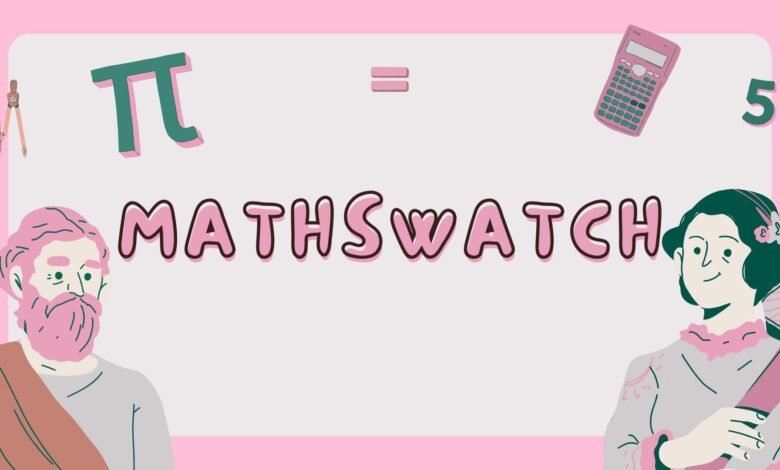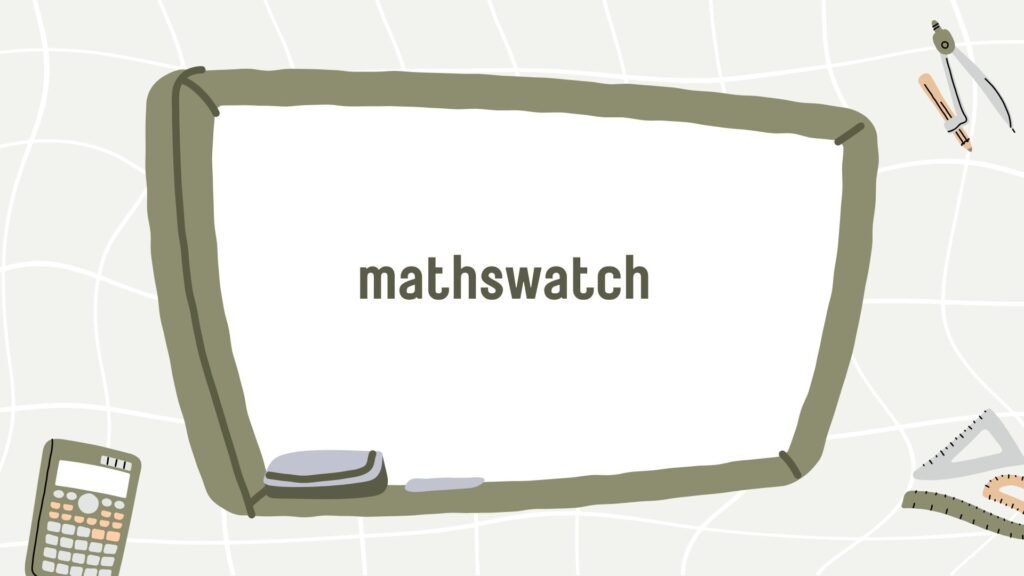Top 10 Mathswatch Clips Every Student Should Watch Before Exams

Ask any GCSE or IGCSE student what revision feels like in the final month, and you will hear the same refrain: too many topics and not enough evenings. Mathswatch was designed to dissolve that overwhelm by turning each specification point into a mini-film followed immediately by auto-marked practice. Yet the library now tops 240 videos, and scrolling it when the clock is ticking can waste the very minutes you are trying to save. Drawing on classroom data, heat-map analytics, and post-mock student interviews, I have distilled the catalog down to ten “high-impact” clips. Master these scenes and you cover more than half of the marks that reappear mathswatch year after year across exam boards. The list runs in a deliberate order—Number → Algebra → Geometry/Measures → Statistics—so the skills stack like story beats in a screenplay rather than scatter like unrelated trailers.
How the ranking was decided
- Question frequency across eight recent GCSE past papers.
- Error severity—topics where slips cost multiple marks, not just one.
- Transfer power—skills that unlock several later questions (e.g., fractions underpin algebraic fractions).
- The visual clarity of the Mathswatch animation; some clips simply teach better on film than on paper.
With that rubric, here are the ten clips that deliver the biggest mark-per-minute dividend. (All clip titles and codes come from the official Mathswatch index.
1. N36 Fractions – Adding and Subtracting
Fractions lurk inside ratio, probability, algebraic fractions, and even gradients, so early mastery multiplies returns. In clip N36, Mathswatch slows the arithmetic right down: common denominators glide into place, numerators are highlighted in a contrasting color, and the result simplifies with an audible click. The follow-up questions mix proper, improper, and mixed numbers, mathswatch ensuring you do not over-specialize. Spend 15 quiet minutes here, and later, fraction anxiety evaporates when the same mechanics pop up inside “harder” algebra.
2. A17 Forming and Solving Basic Equations
Linear equations are the grammar of GCSE algebra; you will write them to solve geometry puzzles, ratio barriers, and motion problems. Clip A17 begins with the physical balance animation—weights sliding off each pan as you “do the same to both sides”—and ends with unknowns buried in parentheses and fractions. The secret sauce is the instant feedback mathswatch loop: a wrong rearrangement triggers a short rewind to the exact second where you lost equivalence. Two or three corrections here inoculate you against mark-bleed later.
3. A20b Inequalities – Solving
Textbooks often treat inequalities like equations with an extra squiggle, but the moment you multiply or divide by a negative the sign flip ambushes half the class. In A20b the variable and inequality symbol animate together; when the direction changes, mathswatch the arrow physically rotates, a cinematic cue students replay in their minds during the exam. The on-screen number-line tool then shades the correct region, bridging algebra and graphical interpretation in one sweep.
4. A24b Simultaneous Equations – Algebraically
Every higher-tier paper hides at least one pair of equations worth 3–4 marks. Mathswatch A24b choreographs elimination in three acts: align the coefficients, subtract to expose a single variable, and back-substitute to resolve the partner. mathswatch The overlay transparency, where one equation slides on top of the other, turns a dry procedure into visual storytelling. Complete this clip until you can narrate each step aloud without the subtitles; the cognitive load you shed resurfaces as precious checking time in section C.
5. A28 Exponential and Reciprocal Graphs
Candidates often freeze when a question displays a non-linear curve—even though interpreting axes is nothing new. Clip A28 animates the plotting process point by point and then sweeps a smooth curve through the cloud, so you witness the shape emerging, not just the static image. It zooms next to asymptotes, making the “never quite touches” idea intuitive rather mathswatch than mystical. Because exponents now appear in both Science and Geography exams, the cross-subject mileage here is enormous.
6. N45a Standard Form – Numbers Above 1
Calculator papers love to sandwich standard-form steps inside otherwise routine percentage or volume problems. In N45a, the tutor leverages the power-of-ten slider: drag left to shrink, right to magnify, and watch the decimal hop. The immediate tasks require rewriting answers from brute calculator output to the two-part a×10na \times 10^{n}a×10n format examiners mathswatch demand. Locking that muscle memory reduces transcription errors and spares you the cringe of dropping a mark you had already earned arithmetically.

7. G30 Pythagoras
From diagonals in prisms to vector magnitudes, Pythagoras underpins many geometry surprises. Clip G30 begins in two dimensions, then tilts the whiteboard into 3-D, mathswatch stacking a second right-angle triangle, so learners see why the formula merely stretches. The pen tool invites you to trace the square on each side, reinforcing the link between area and length. By the last interactive question, c² = a² + b² is not a rule to remember but an image impossible to forget.
8. G35a Trigonometry – Finding a Side
Clip G35a bridges the gap from Pythagoras to full SOH-CAH-TOA fluency. The video axes rotate, pulling the opposite and adjacent sides into neon highlights while the angle badge pulses in sync with the sine or cosine button on an on-screen calculator. mathswatch Students practice choosing the correct ratio rather than guessing. A built-in “check units” nudge prevents the classic degree/radian blunder—one of the stealthiest marks lost in calculator papers.
9. R11a Compound Measures – Speed
Motion questions interlace with physics and functional maths tasks. In R11a, the tutorial literally unpacks the speed triangle: separate layers detach and realign so you can memorize the rearrangements visually instead of chanting, “Cover what you need.” The practice set mixes units (km/h, m/s), forcing conversions that mimic real-paper granularity. Nail this clip mathswatch and you are covered for any speed-distance-time grid, including the dreaded multi-leg journey.
10. S10b Averages from Tables – Estimate for the Mean
Statistics can feel like free marks until grouped data appears. Clip S10b clarifies the midpoint method with a sliding bar whose center aligns perfectly with the bar height, turning the mid-class value from abstract estimate to tangible distance. The cumulative mathswatch “running total” counter updates line by line, showing why dividing the total by frequency works. Because the same logic drives histograms and box-plot comparisons, this skill cascades beyond a single mark scheme.
Conclusion – hitting play on efficiency
Follow the ten-clip playlist above, and you compress roughly 60 percent of the most-tested GCSE maths content into a focussed, cinematic micro-course. Each clip takes 5–8 minutes, and each task is set about the same, so the whole journey fits inside six one-hour sessions—less time than many students spend coloring flashcards that never leave the bedroom wall. More importantly, Mathswatch remembers your false starts and returns them as color-coded targets; you exit the loop not just knowing the material but knowing that you know it. That metacognitive payoff is what turns a stressful May morning into an organized, almost routine performance.
FAQs
1. Do I need to watch these clips in the exact order listed?
Yes, or at least keep Fractions, Equations, and Inequalities first; later clips assume you can manipulate numbers and unknowns fluently. After clip 5, you mathswatch can shuffle, but stacking the scaffolding topics prevents back-tracking.
2. How many times should I redo the attached interactive questions?
Aim for 100 % on two consecutive attempts spaced two days apart. That gap forces your brain to retrieve rather than simply repeat.
3. My school blocks Mathswatch at weekends—what’s the workaround?
Use the Download Video option from a school computer on Friday; the clip and its transcript cache locally, and you can practice offline. Answers sync the next time you log in.
4. Will this playlist cover the foundation tier as well as higher?
Eight of the ten clips (all except A28 and G35a) sit firmly inside the foundation specification, so foundation students still harvest the bulk of the benefit.
5. I still panic on wordy problem-solving questions—will these help?
Absolutely. Each clip ends with context-rich items—trains, ladders, savings accounts—mirroring sections B and C style. Treat them as rehearsal, verbalize your reasoning, and exam prose stops feeling like a trap.
By mixing the right movie scenes with deliberate practice, Mathswatch turns revision from a static grind into a directed film where every retake tightens the final cut. May your credits roll with a grade that matches the effort.


